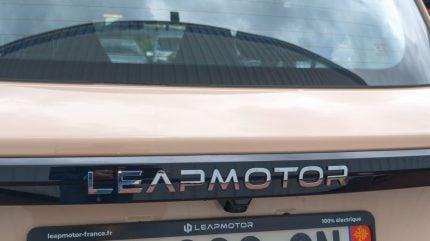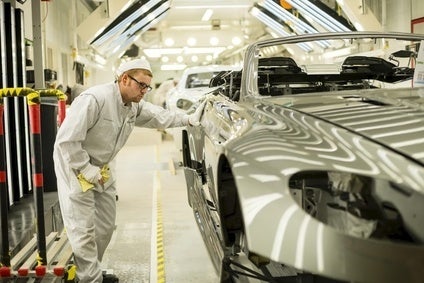
In the face of questions over the Stellantis-Leapmotor joint venture and potential manufacturing capacity integration, Stellantis CEO Carlos Tavares has set out a scenario of regional ‘bubbles’ that could accommodate different scenarios for lowest cost manufacturing.
At a recent press conference, Tavares clarified that the aim of the 51/49 Stellantis-Leapmotor JV (Leapmotor International) was to promote the Leapmotor brand outside of China, with the vehicles being sold through Stellantis retailers.
Answering the question of what advantage Leapmotor would have with “going global”, Leapmotor CEO Jiangming Zhu said via a translator: “We have a deep cooperation [with Stellantis] it is a win-win scenario…I believe they can push us forward.”
Mr Zhu continued: “Soon we will set up more sales and network overseas as well as the delivery system for the components and parts. I believe this is beyond the reach of other car manufacturers in China.”
“We can make use of the manufacturing resources [of Stellantis] for quick localisation so we [can] solve problems such as customs duties.”
How well do you really know your competitors?
Access the most comprehensive Company Profiles on the market, powered by GlobalData. Save hours of research. Gain competitive edge.

Thank you!
Your download email will arrive shortly
Not ready to buy yet? Download a free sample
We are confident about the unique quality of our Company Profiles. However, we want you to make the most beneficial decision for your business, so we offer a free sample that you can download by submitting the below form
By GlobalDataRecurring questions surrounding which European plants had been selected or could be used to assemble Leapmotor products were met with careful answers from Mr Tavares, who referred to “bubbles.”
He said: “We are creating bubbles on one region [and] another region, to close the market. In those bubbles, let’s think about the strategy: that we always have plans outside of the bubbles.”
“Either we are going to export directly and let the consumer enjoy more affordability […] or if we cannot export directly from Leapmotor International, we can use the manufacturing footprint of Stellantis inside the bubble.
“Let’s think about this partnership […] we can accommodate different custom duties scenarios by using – or not [using], depending on the regions – the plans inside the bubbles. This is a very interesting scenario and partnership for both of our companies because we can accommodate flexibly different decisions.”
Asked about production in Europe and what would happen if tariffs would be raised by the EU, Tavares said: “We will have to demonstrate local manufacturing is a better business case than the exports out of China – we will compare the two scenarios.
“If it makes more sense to assemble the vehicle locally then we will select the plant based on two criteria: quality and cost – this is something that has been the case for many years.”
He concluded: “There is a very pragmatic provenance of those kind of decisions – it will be decided with Leapmotor International.”
Earlier this year, Stellantis’ CFO Natalie Knight said Leapmotor International sales was “not going to be hugely material for us as a group,” but added the firm was “seeing a lot of interest from the Middle East and Africa, and South Africa to get moving on these products because they’re very cost competitive in their market.”





